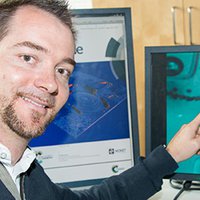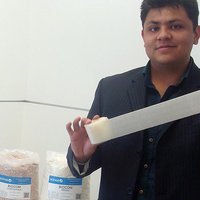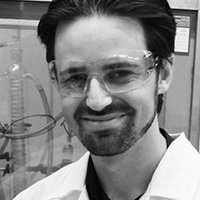Since starting his lab at the University of Texas at Austin in 2012, materials scientist Guihua Yu has been controlling the three-dimensional nanostructure of materials to make electrically conductive gels that can serve as electronic skin, more efficient battery electrodes, or tunable chemical sensors.
Hydrogels, which are flexible, squishy networks of polymers, are great for supporting the growth of cells in research experiments or binding together active ingredients for drug delivery. But they typically are lousy at conducting electricity. In contrast, electrically conductive polymers are valuable in electronics—for example, in new types of plastic solar cells—but typically can only be made into thin films. Yu figured out how to link conductive-polymer building blocks to make nanostructured gels that had the best qualities of both materials.
One gel can be used to hold glucose-binding enzymes and nanoparticle catalysts, key elements of a rapid, highly sensitive glucose sensor that might be used for diabetes management. Another makes for a more resilient battery electrode with higher energy density.
—Katherine Bourzac




